Primrose healing properties. Primrose
(Primula veris L.)
Spring primrose, medicinal primrose or true primrose - primroses family, class dicotyledonous. The spring primrose is also called rams, as we called these flowers in childhood.
Its young leaves are wrinkled, wavy along the edge, covered with a velvety down below, like the skin of a young lamb. As they grow, the leaves are smoothed out. Spring primrose is also called keys - its inflorescence resembles a bunch of keys. There was a legend that these
the golden keys of the goddess of spring unlock summer doors to warm weather, green grass and flowers. Primrose grows in light mixed and deciduous forests, on forest edges and grassy slopes. It blooms in April - May, while the forests are slightly darkened by foliage.
Spring primrose is perennial with a powerful rhizome with numerous cord-like roots, from which a rosette of oval-shaped leaves, narrowed into a winged petiole, departs, and several leafless erect peduncles 10-20 cm tall, appearing one after another as flowering, with umbrella-shaped inflorescences of golden yellow flowers with a pleasant honey aroma. V yellow the corolla of the flower stains the antochlorine pigment in the cell sap - the same one that stains the fruit of the lemon.
The fruit is an erect box with teeth at the top - they open and in good weather the seeds are scattered by the wind, in bad weather the teeth are bent inward and the box closes.
Leaves, flowers and the whole plant are harvested and dried during or towards the end of flowering, dried quickly and, if possible, heated to a temperature of 60 degrees, while vitamin C is almost completely retained. Everything beneficial features dried plants are stored for a year.
Rhizomes with roots are harvested in spring or autumn, cleaned, washed, wilted and dried in the open air in the shade or at a temperature of 35 ÷ 40 ° C.
In the primrose medicinal, the whole plant has medicinal properties: leaves, flowers, flower arrows, roots. Flower arrows are eaten fresh - they are juicy, tender, they contain many vitamins that are so necessary in early spring.
The rhizomes and roots contain glycosides, saponins, essential oils and vitamins. Preparations from roots and rhizomes are prescribed as an expectorant for diseases of the upper respiratory tract, chronic tracheitis and bronchitis, for bronchopneumonia. But most often these drugs are used in combination with chamomile, calendula and anise.
The leaves of spring primrose are champions among greens in terms of the content of ascorbic acid - vitamin C; the leaves also contain provitamin A - carotene, saponins. The leaves are used to treat hypo- and vitamin deficiencies. No wonder in England and the Netherlands the spring primrose is cultivated as a valuable salad plant - vitamin salads are prepared from the leaves.
Primrose in Latin. The scientific generic name Primula comes from the Latin word prima - "first", the diminutive form of this word is given because the spring primrose blooms in the earliest spring, one of the first, hence the Russian generic name "primrose". The scientific specific name veris is translated from Latin as "spring".
The primrose has been known since ancient times and there are many legends. The ancient Greeks believed that it contained a healing principle against all diseases; it was considered the medicinal flower of Olympus. In ancient times, they were treated for paralysis and pain in the joints, so in medicine it is still often called a paralytic herb. In England, the primrose was called a magic flower and it was believed that fabulous tiny fairies and gnomes find shelter in the wilted flowers of primroses during bad weather.
Primrose medicinal properties application
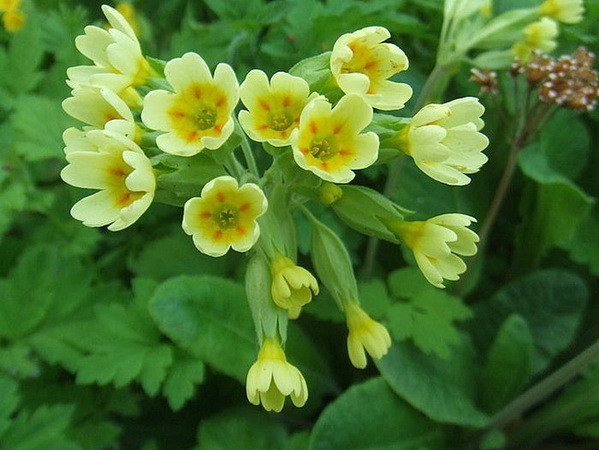
The spring primrose, due to the presence of saponins, gives an antitussive, diaphoretic and diuretic effect. The expectorant effect in diseases of the respiratory tract, pneumonia is due to the fact that the saponins contained in the plant increase the secretion of the bronchial glands and mucous membranes of the respiratory tract. The drugs speed up the metabolism, increase the secretion of gastric juice.
For coughs, bronchitis, diseases of the upper respiratory tract
use the roots and rhizomes in the form of a decoction or infusion:
- broth: 1 tbsp. pour a spoonful of chopped roots with 1 cup boiling water, heat in a water bath under a closed lid for 15 minutes, cool for 45 minutes, strain, squeeze out the rest of the raw material. Take 1 tbsp. spoon 4 - 5 times a day with honey in a warm form;
- infusion: 1 tbsp. pour a spoonful of raw materials with 1 cup of boiling water, close the lid tightly, wrap and leave for 4 - 6 hours, strain. Can be brewed in a thermos overnight. Take 2 tbsp. l. 3-4 times a day.
Decoctions and infusions also have a calming effect. As a light sleeping pill, drink 1/4 ÷ 1/3 glass of infusion or decoction at night.
As an expectorant and anti-inflammatory agent
use flowers and the whole plant:
- 2 tbsp. spoons of flowers, brew 2 tbsp. boiling water (the whole plant needs to be taken 2 times more), insist in a thermos for 2 hours and take 0.5 cups 4 - 5 times during the day. With this infusion you can rinse your nose and gargle with inflammatory processes.
This infusion is drunk for headaches and to relieve fatigue, irritability, nervous exhaustion, as a mild sedative for kids. For children, take 1/4 cup infusion 3-4 times a day.
Leaf tea with spring primrose flowers

With vitamin deficiency, to restore strength after a severe diseases as a general tonic drink tea from leaves with flowers:
- 1 tbsp. l. leaves with flowers, brew 250 ml of boiling water, let it brew. Drink throughout the day.
Tea from leaves with flowers is useful for joint diseases - it soothes pains, drives salts from the body.
Primrose is also included in the collection used for diseases of the respiratory system:
- spring primrose flowers - 1 part
- elecampane root -1
- coltsfoot leaves -1
- licorice root -1
Mix everything, chop, 1 tbsp. l. pour the mixture with a glass of boiling water, leave for 30 minutes, wrapped well. Take 1/4 ÷ 1/3 glass 3-4 times a day warm after meals with severe cough, chronic bronchitis, tracheitis.
- medicinal primrose flowers - 4 parts
- horsetail herb - 3
- plantain leaves - 2
- leaves of coltsfoot - 1
One Art. l. pour the mixture with a glass of boiling water, leave for 1 hour, wrapped well. Take 1/4 ÷ 1/3 glass 3-4 times a day after meals. Recommended for diseases of the respiratory tract to relieve coughing attacks and increase the discharge of sputum.
An anti-asthma drug "Solutan" is made on the basis of an extract from rhizomes with roots of the medicinal primrose.
PRIMARY COLOR CONTRAINDICATIONS:
- Acidic gastritis.
- Peptic ulcer of the stomach and duodenum.
The use of primrose medicinal in cosmetics
For loose skin, wrinkles, acne, freckles use an infusion of herbs, roots:
- 2 tbsp. Pour tablespoons of finely chopped raw materials with 1 glass of boiling water, wrap, leave for 4 - 6 hours, or brew in a thermos overnight. The infusion should not be stored in a thermos for more than a day. Cool, strain. Apply as a lotion - moisturizes the skin, eliminates facial redness.
It is good to wash with this infusion with dry thin, irritated skin, dilated vessels.
With hair loss you can prepare a decoction from the roots of spring primrose:
- 1 tbsp. pour a spoonful of finely chopped rhizomes with roots with 1 glass of water, boil in a water bath for 30 minutes, stirring often, cool for 10 minutes, strain, squeeze the remaining mass, bring boiled water to the original volume. Rub the broth daily into the lesions. A decoction of rhizomes with roots is used as hair growth stimulants.
Fresh primrose leaves contain many vitamins, especially ascorbic acid. Delicious vitamin salads can be prepared from the first spring leaves, which helps to strengthen and improve the body, to replenish the lack of vitamins.
In the Far East and the Caucasus, young leaves of spring primrose are placed in cabbage soup and soups.
And in France, Poland and Sweden, a tincture is prepared from flowers, adding sugar and honey, and used in the summer as a soft drink.
Primrose roots are used as a spice with anise aroma.
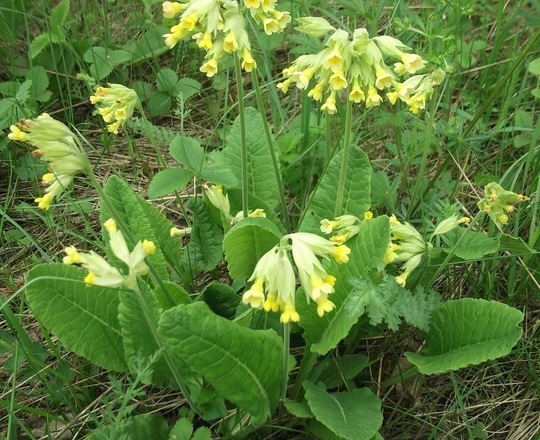
The spring primrose used to be widespread everywhere, now in many territories, due to human economic activity, it is becoming an endangered species and is listed in the Red Book. Therefore, you should not collect all the plants in one place, you must definitely leave some of the plants for reproduction and renewal.
Spring primrose is a perennial plant that reproduces well by dividing rhizomes, as well as by seeds ripening at the end of August, therefore, for medicinal purposes it is better to grow it in the garden, in the garden, it is a relatively unpretentious, but very healing plant.
Dear Readers! I hope this small article Primrose useful properties and contraindications was interesting and useful to you, share with your friends.
Take care of the natural world and be healthy!
After a long and cold winter we are all waiting for the appearance of the first messengers of spring - tender and fragrant snowdrops. And not everyone knows that these are not the only messengers of the long-awaited spring, who notify us that the reign of winter has come to an end. At the same time, the earth is covered with a luxurious carpet of primroses - medicinal plants, which are also very beautiful.
V Ancient Greece the primrose was considered the flower of Olympus; it was called the "flower of the twelve gods." The Greeks believed that he appeared from a body that died from the love of the young man Paralysos. Mourning for him, the gods turned him into a beautiful spring flower.
Ancient healers used the plant in the treatment of various paralysis. In many countries, primrose is the flower of marriage. It is believed that the girl who is the first to find this year will definitely meet her betrothed and get married. They were especially sensitive to the primrose in England, where they revered it as a magic flower and firmly believed that old gnomes and tiny fairies were hiding in it from bad weather.
Types of primroses
Today there are more than five hundred species of primroses (primroses), which differ in flowering time, color of flowers. In our country, the most common plants with medicinal properties:
- large-cup;
- spring primrose (medicinal);
- high;
- mealy.
In this article, we will introduce you to medicinal primrose.
Description of the plant
Primrose preparations: infusion of roots and rhizomes
Place 10 grams of dry raw materials in a bowl (preferably enameled), pour 250 ml of boiled grass into the herb hot water, close the container with a lid and place it in a water bath for half an hour.
After that, the composition should be cooled naturally and filtered. Leftover raw materials should not be thrown away: they can be used one more time. Bring the volume of the composition to 200 ml with cooled boiled water. The tool is used in two tablespoons (tablespoons) three times a day about half an hour before meals with chronic diseases bronchi and lungs. 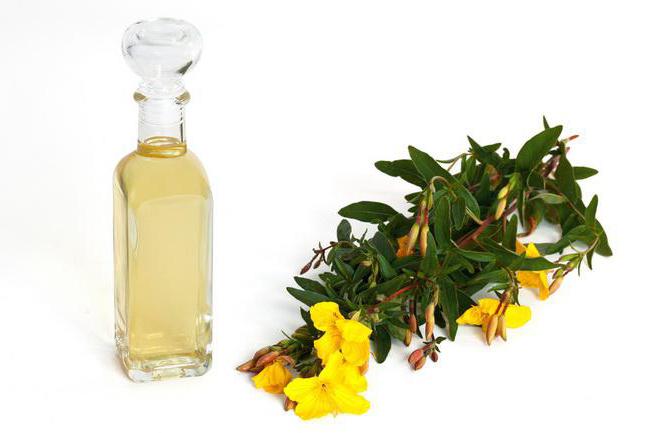
Decoction of roots
Pour 20 grams of raw materials with 500 ml of water and boil over low heat for fifteen minutes. Then the mixture should be infused. This will take no more than forty minutes. Strain the resulting product and take 100 ml before each meal. The broth is recommended for diseases of the bronchi and lungs, kidneys and severe forms of rheumatism.
Herb decoction
Boil 20 grams of dry crushed leaves in 250 ml of water for half an hour over low heat. After that, strain the resulting composition and bring the volume to the original with boiled water.
Take this remedy one spoonful (tablespoon) at least four times a day for whooping cough, acute and chronic bronchitis, pneumonia.
Infusion of primrose flowers
Pour 25 grams of dry raw materials with a glass of boiling water and let it brew for half an hour. Squeeze raw materials, take 100 ml four times a day. Infusion normalizes metabolism, improves gastric secretion.
Primrose juice
Juice is squeezed out of the flowering grass (aerial part). Take it in a third of a glass, adding a spoon (teaspoon) of honey three times a day before meals.
Primrose syrup
Primrose syrup is an excellent expectorant that is effective for acute respiratory infections, tracheitis, bronchitis, accompanied by dry cough. Syrup, has Brown color and a subtle specific smell. It can be purchased at the pharmacy.
Fortifying drink
Rinse 250 grams of fresh primrose flowers well and fill with a liter cold water, leave to infuse until fermentation begins. Then add your choice: sugar, honey or jam to taste. Store the drink in a cool, dark place. It is taken 150 ml four times a day before meals. 
Tea
Chop dry leaves or roots and mix in equal parts. Grind the herbal mixture and brew like tea. You can improve the taste with honey or jam.
Collection and storage of raw materials
For medicinal purposes, both the roots and the aerial part of the plant are used: stems, leaves and flowers. The aerial part of the primrose is harvested when the plant begins to bloom. The raw material is dried after being harvested for open sun or in dryers. The maximum temperature is +50 ° C. This is because slow drying significantly reduces the vitamin C content of the plant. 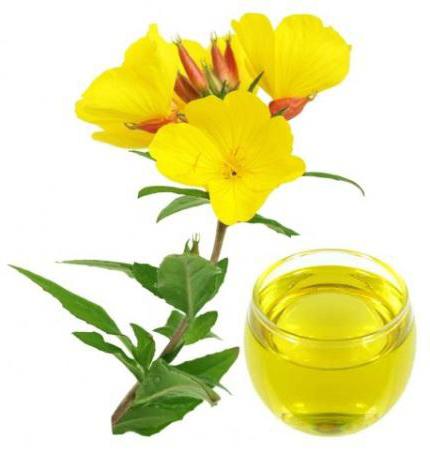
The leaves are carefully picked off by hand, while half of them should be left on the stem. This will allow the plant to grow and develop normally in the future. We must not forget that the medicinal primrose is listed in the Red Book, therefore, its mass collection is prohibited.
Dried leaves have a grayish-green color, honey smell and sweetish taste, which is quickly replaced by a pungent-bitter aftertaste.
Flowers are harvested without cups from April to May. Dry them on fresh air under a canopy, or in a well-ventilated shaded area. Medicinal primrose, more precisely, its flowers, dried correctly, are open yellow corollas with a delicate odor and sweetish taste.
The roots of the plant should be dug up in the fall, immediately after the aerial part of the plant withers. You can do this in early spring, but before the primrose bloom. The roots are thoroughly shaken off the ground, then washed in running cold water, dried a little in air, and then completely dried in a dryer at a temperature not exceeding + 60 ° C. Correctly dried rhizomes are reddish-brown in color. Inside, the roots are whitish in color with a bitter astringent taste and subtle odors.
Dried raw materials are stored either in multi-layer paper bags, or in canvas bags, in a ventilated area.
Contraindications, side effects
Quite rarely, but there are people with an allergic reaction to primrose officinalis. Applying any medications or even touching the grass can cause them to itch and burn their skin. The affected areas are covered with bubbles that fill with fluid. Later, in the places where the vesicles were and healed, the skin begins to peel off, and when scratching, sores can form. Pollen trapped in the upper respiratory tract or in the mouth can cause inflammation of the mucous membranes.
If allergic reactions occur, the drug should be stopped immediately. Medicinal primrose is not recommended for pregnant women and nursing mothers, as well as children under three years of age.
Primula veris (Primula officinalis)
Taxon: family Primroses ( Primulaceae)
Other names: medicinal primrose, medicinal primrose, celestial keys, golden keys, St. Peter's flowers, rams, lambs, white letter, God's hands
English: Herb Peter, Key Flower, Key of Heaven, Fairy Cups, Paigles
Botanical description
Perennial herbaceous plant 15-20 cm high, appears in early spring as soon as the snow melts. The rhizome is oblique, unbranched, short, covered with whitish filamentous roots. Leaves are basal, ovate. One (or more) flower arrow bears an inflorescence - a simple one-sided umbrella. The flowers of the spring primrose are large, bright yellow with an orange spot at the base of the corolla lobes. The fruit is a multi-seed ovoid brown capsule. Seeds are spherical, 1-1.5 mm long. Blooms in April-May. Ripens in June-July. It cracks only in favorable weather; in bad weather, the boxes are closed.
Growing places
It grows in large numbers in deciduous and mixed forests of the middle and forest-steppe zones of the European part of Russia.
Collection and procurement
For medicinal purposes, the herb, leaves, flowers, roots, rhizomes of the medicinal primrose are harvested. The aerial part of the plant is harvested during flowering, dried immediately in the sun or in a dryer, oven, oven at a temperature of 40-50 ° C. With delayed drying, the amount of vitamin C is significantly reduced.
The dried leaves are grayish-green, honey-smelling, the taste is sweetish at first, then burning-bitter.
Flowers are harvested without cups in April-May, air-dried. Dried flowers - open yellow corollas of a weak smell, sweetish taste.
Rhizomes with roots are dug up in the fall, after the aerial part of the plant withers, or in early spring before flowering. They are shaken off the ground, the stems are cut off, washed in cold water, slightly dried in air and dried in dryers, ovens, ovens at a temperature of 50-60 ° C.
Dried rhizomes are reddish brown, with scales. Whitish roots, 3-10 cm in length, bitter, astringent taste, faint odor.
Raw materials of spring primrose are stored in multilayer paper or canvas bags, on shelves in well-ventilated areas. Primrose leaves by mid-June contain up to 6% ascorbic acid; quickly dried leaves retain vitamin C almost completely.
The shelf life of leaves and flowers is 1 year, rhizomes and roots - 3 years.
The chemical composition of the spring primrose
Saponins were found in the roots of spring primrose in an amount of 5-10%, essential oil-0.08% and glycosides: primulaveria (primulaveroside), primverin (primveroside), related to triterpene compounds. Saponins are found in leaves, saponins and flavonoids are found in flowers. All plant organs contain ascorbic acid. On a dry matter basis, the leaves contain 5.9% and the flowers 4.7% ascorbic acid (vitamin C); a small amount of carotene is found in the leaves and roots.
Healing properties of spring primrose
Primrose preparations have a diaphoretic, tonic, vitamin, expectorant effect, improve the function of the adrenal glands, the secretion of gastric juice.
The use of spring primrose in medicine
Infusion and tinctures of primrose, when taken orally, enhance the secretion of bronchial glands, are low-toxic. It is used for respiratory diseases, dizziness, insomnia, general weakness, kidney and bladder diseases, pneumonia, poor appetite, rheumatism, hypovitaminosis, scurvy.
Medicinal preparations of spring primrose
The infusion is prepared from dry primrose leaves during the flowering period of the plant: 1 tsp. crushed plants are poured with a glass of boiling water, insisted for half an hour and drink half a glass 2 times a day. The infusion is prepared in an enamel bowl. On the second shade, the content of vitamin C in the infusion decreases.
Infusion of primrose roots: brew 200 ml of boiling water 5 g of roots, leave for 2 hours, drain. Drink 1 tbsp. l. 3-4 times a day for constipation, insomnia, general weakness, poor appetite, cough, dizziness, kidney and bladder diseases as a remedy.
Infusion of primrose leaves: brew 20 ml of boiling water 5-10 g of powder from the leaves, leave for 1 hour, drain. Take 1 tbsp. l. 3-4 times a day with poor appetite, general weakness, cough, hypovitaminosis, scurvy, pneumonia.
Infusion of primrose flowers: brew 200 ml of boiling water 25 g of primrose flowers, leave for 30 minutes, drain. Drink 100-200 ml 1-3 times a day for dizziness, chronic constipation.
A decoction of primrose herb: boil 20 g of chopped herbs in 200 ml of water for 20 minutes, strain. Take 1 tbsp. l. 3-4 times a day for bronchitis, pneumonia, whooping cough as an expectorant.
A decoction of primrose roots: boil 20 g of primrose roots in 400 ml of water for 15 minutes, leave for 30 minutes, strain. Drink 100 ml 3-4 times a day for respiratory diseases, rheumatism, gout, kidney and bladder diseases.
Drink from primrose flowers: Rinse 250 g of primrose flowers, pour 1 liter of cold water, insist at room temperature before fermentation, add honey or sugar (to taste). Store in a cool, dark place.
Tea with primrose. Mix the dried leaves or roots of primrose and St. John's wort in equal amounts, chop. Brew like tea. Drink with sugar, honey, jam, xylitol, sweets.
Primrose leaves in an earlier period, at the beginning of flowering, are used to prepare salads. Two primrose leaves are enough to satisfy the body's daily need for vitamin C. The presence of vitamin A in primrose leaves makes it possible to use them in case of a deficiency of this vitamin.
Use on the farm
Grind dried roots and rhizomes of primrose into powder and use for dressing soups, borscht, meat, fish, vegetable dishes, snacks, drinks. Store in paper bags, glass jars in a dry place.
For economic purposes, a dye is obtained from grass and primrose flowers olive color for fabrics.
Photos and illustrations
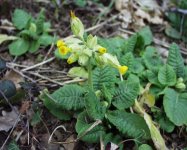

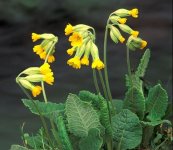
Spring primrose is a perennial herb 15-30 cm in height with a rosette of basal leaves and a short obliquely or vertically located rhizome, from which whitish cord-like roots extend. Leaves are ovate or ovate-oblong, wrinkled, narrowed into a pterygoid petiole, obtuse at the apex, slightly crenate at the edges, with veins depressed above and protruding below, short pubescent, increasing after flowering. The flowers are bright yellow, with a honey smell, collected at the apex of a long flower arrow, 5-13 in an umbellate inflorescence, drooping to one side; calyx bell-shaped-swollen, with 5 sharply protruding ribs, covering the corolla tube almost to the bend, swelling after flowering; corolla is tubular, with a small bend and a long tube, with an orange spot at the base of the petals, with 5 concave lobes. The fruit is a brown ovoid polyspermous capsule enclosed in an overgrown calyx.
Blooms in May - early June.
It grows in forests, on dry edges, on hillsides, in thickets of bushes, along river banks, in oak forests, in dry meadows.
Distributed in the south of the forest and in the forest-steppe zones of the European part.
Blanks are possible in small quantities.
The use of primrose in medicine
In medicine, the leaves of the primrose - Folium Primulae and rhizomes with roots called Radix Primulae are used.
The leaves are harvested during the flowering period and dried quickly in the shade. The raw material consists of leaves of the described structure. They are whole or partially broken. The color is grayish green; the smell is weak, peculiar, slightly honeyed; the taste is first sweet, then bitter, slightly pungent. In the finished raw materials, moisture is allowed no more than 13%; ash content no more than 12; ascorbic acid not less than 2; yellowed and brown leaves on both sides, no more than 2; crushed leaves passing through a sieve with holes 1 mm in diameter, no more than 3; flower arrows no more than 8; organic and mineral impurities no more than 0.5%.
The leaves contain up to 5.9% ascorbic acid (vitamin C), carotene, saponins. They are used in medicine as a vitamin raw material, valuable because it can be prepared in early spring, in the form of infusions, when there are no other sources of vitamin C and the need for it is great. Recommended for hypovitaminosis, anemia, and general weakness.
Rhizomes with roots are harvested in the fall. They are dug up, washed, cleaned of the remnants of leaves and stems, slightly dried in the air and dried in the open air or in ventilated areas. The raw material consists of short and small brown rhizomes; at the fracture they are light, with numerous thin adventitious roots of light brown color, about 5 cm long, 0.1 cm thick, extending from them.
Rhizomes contain up to 10% saponins, glycosides primulaverin and primverin. They are used as a diaphoretic, antipyretic and expectorant, especially for bronchitis, in the form of infusions or the drug "Primulina" (dry extract from the roots). Primrose preparations are low-toxic and surpass Senega in their activity.
Rp .: Infusi radicis Primulae ex 4.0-200.0
D.S .: 1 tablespoon 3-4 times a day
The use of primrose in traditional medicine
THE FIRST COLOR OF THE CUCKOO'S TEARS
As soon as the cuckoo bites, the primrose blooms, which is popularly called the cuckoo's tears. Collect its flowers with cups. This medicinal plant contains saponins, glycosides, flavonoids, essential oils, vitamins. It helps to separate phlegm and normalize blood pressure, heals a tired heart and is part of breast teas for colds.
Primula - favorite plant many peoples of the world.
Spring primrose, rich in triterpene saponins, glycosides, flavanoids, ascorbic acid, manganese, carotene, microelements of the hematopoietic complex, has been used since ancient times for:
emphysema of the lungs
incessant coughing
chronic and acute bronchitis
kidney and urinary disorders
bladder (very effective with red root and golden thorn)
general loss of strength (with a red brush or orchis)
bronchial asthma (with lungwort and sophora)
chronic constipation
lack of vitamins in the body
anemia
neuralgia
neuroses
migraine
edema
lack of appetite
loosening of the gums
increased nervous excitability (excellent results in combination with shiksha)
dizziness
V folk medicine a decoction of primrose flowers is drunk for heart disease, for coughs and chest pains. In folk medicine, herbs, leaves, flowers, roots are used. Thanks to the rich chemical composition spring primrose is used for various diseases. Its infusion (1 tablespoon per 1 glass of boiling water, leave for 30-40 minutes, drain) is used as an expectorant, anti-inflammatory, sedative, diuretic. Young leaves are added to salads for vitamin deficiency, as well as to compensate for the lack of vitamins C and A (it is enough to eat up to 2 leaves a day).
The plant is mixed 1: 1 with honey and consumed when infused for 7 days with inflammation of the heart muscle, rheumatic heart disease, cardiac neurosis. And we of those flowers are successfully used in home cosmetics. They rub it on oily skin with clogged pores and rinse oily hair. To prepare the drug, you need to fill the container with dry flowers to the top, completely pour boiling water over it and insist overnight.
Healthy recipes using evening primrose
2 tbsp Pour crushed raw materials with 2 cups of boiling water, leave for 20 minutes, drain. The prepared medicinal liquid is
the daily dose to be taken by sips.
To improve vision
2 tbsp Pour primroses into a thermos, pour 0.5 liters of boiling water, leave for 1.5 hours. Drink 1/2 of a glass 3 times a day, and bury your eyes 2 drops at night. For better results, try adding 1 tablespoon to the primrose. eyebright. The course of treatment is 2 months. Break - 2 weeks. As a rule, the procedure must be repeated 3-4 times.
To increase potency
Add 2 tablespoons to 0.5-0.7 liters of wine. dry primrose, leave for a month, drain. To make homemade "cognac" you will need 25 g of red root and 1 tbsp. primrose and 0.5 liters of vodka, leave for 2 weeks.
For skin rejuvenation
First recipe
Facial lotion is prepared from a plant and vodka in a 1: 5 ratio.
Second recipe
I also have one old recipe for skin rejuvenation and regeneration, which has amazing power: it removes folds, wrinkles, age spots, acne, redness, irritation. To prepare it, you will need 5 tablespoons. chopped primrose, 2 tbsp. elecampane, 2 tbsp. comfrey roots and 0.5 liters of vodka. Pour the herbal mixture with vodka, leave for a month. In the morning and in the evening, wipe cleansed skin.
Third recipe
5 tbsp chopped primrose, 2 tbsp. elecampane, 2 tbsp. put comfrey roots in a saucepan and pour 0.7 liters of wine "Aligote" (white, dry; you can also another brand), simmer for 15-20 minutes. Cool, strain and pour into a bottle. Store on the bottom shelf of the refrigerator. In the morning and in the evening, gently wipe the skin with a product. "... Our townspeople know quite well that ointment or water, driven away from the primrose, helps to preserve beauty ..." - said at one time Nicholas Culpeper back in 1653.
(Primula officinalis Jaeq.)
Russian names: medicinal primrose, spring, ram, primrose.
Belorussian: lekava pershall, baranchyk, letters, springvik
Ukrainian: pervotsvgg lykarsky, spring, rams.
Primula officinalis is a perennial herb of the primroses family (Primulaceae), up to 30 cm high, with a vertical or obliquely growing brown rhizome and a bunch of thin roots. The stem is round, erect. The leaves are collected in a basal rosette, ovate-oval, oval or oblong, wrinkled. Flowers in an inflorescence umbrella, drooping one-sided, golden yellow, with orange spots on the throat. The flowers have a honey smell. The fruit is an ovoid brown, multi-seeded capsule. Blooms from April to June; fruits ripen in July. The medicinal primrose propagates by seeds, dividing bushes and cuttings. Nowadays, the plant is becoming rare. Included in the list of species in need of preventive protection and rational use... Medicinal primrose grows in dry meadows, in thickets of bushes, along river banks, in mixed and deciduous forests.
In ancient Greece, the primrose was considered the medicinal flower of Olympus, it was called the flower of the twelve gods - "dodecateon" and it was believed that it arose from the body of the young man Paralysos, who died of love. Out of pity for him, the gods turned him into a flower. Ancient doctors treated them with various kinds of paralysis. It is no coincidence that the primrose is known as the "paralytic herb".
In some countries, primrose is considered the flower of marriage. According to legend, the girl who is the first to find a primrose flower on Easter will certainly get married this year.
Primrose was especially loved in England, where many legends have been written about it.
They called it a magic flower and believed that tiny fairies and old gnomes took refuge in it from the weather. As soon as the bright month closes with dark clouds and the first drops of rain fall to the ground, little people look out for their favorite flower, and when they find it, they climb inside the golden corolla and comfortably settle in it. Soon their pleasant singing is heard, only few mortals manage to hear it.
Collection and drying of raw materials... Leaves are collected at the beginning of the flowering plant, plucking them by hand. In this case, half of the leaves on each plant are left so as not to damage flowering and fruiting. Dry them quickly in well-ventilated rooms, but better in ovens or dryers at a temperature of 90-120 ° C. More vitamins are retained when dried quickly. The leaves have a shelf life of 1 year.
Rhizomes with roots are harvested in the fall at the beginning of the wilting of the plant, or in early spring before the leaves grow back. The dug roots are cleared of the ground, the aerial parts are cut off with a knife, and quickly washed cold water and wilted in the open air. Then they are dried up in rooms with good ventilation or in dryers at a temperature of 50-60 ° C. The raw material has a pleasant violet-like smell and a bitter taste. The shelf life of raw materials is 3 years.
However, at present, since there are other saponin-bearing plants that have an expectorant effect, the collection of rhizomes from the roots and their use have been discontinued.
Flowers are harvested without cups in April - May, air dried. Dried flowers are open yellow corollas with a faint smell, sweetish taste. The shelf life of flowers is 1 year. Flowers are exported.
Chemical composition... The leaves of the plant contain up to 5.9% ascorbic acid, carotene, saponins (about 2%), flavonoids. The rhizome contains saponins (up to 10%), essential oil, glycosides: primuloverin, primverin, alcohols, manganese, carotene, ascorbic acid; flowers - saponins and flavonoids.
Pharmacological properties... Galenic preparations of primrose have an expectorant effect and somewhat increase the secretory activity of the mucous membranes of the upper respiratory tract and bronchi. The expectorant properties of the drugs are due to the content of triterpene glycosides in the roots of the primrose. In addition, the primrose increases the activity of the ciliated epithelium and accelerates the evacuation of secretions from the respiratory tract.
Application in medicine... Rhizome. Infusion - as an expectorant for catarrh of the upper respiratory tract, chronic tracheitis and bronchitis, with bronchopneumonia. It is widely used in combination with chamomile, calendula, angelica and anise. In folk medicine, decoction, tincture and syrup - as an expectorant in the treatment of tuberculosis, bronchitis, asthma, pneumonia; sedative, antispasmodic, diuretic, mild laxative, analgesic (for convulsions and paralysis); infusion - for constipation, insomnia, general weakness, poor appetite, cough, dizziness, kidney and bladder diseases (as a diuretic). Broth in the form of lotions and compresses - for bruises. In Transcaucasia, powder is used for impotence.
Aboveground part. It is part of the ointment for the treatment of scalp eczema. A decoction in folk medicine - for bronchitis, pneumonia, whooping cough (as an expectorant). Juice - to reduce bleeding gums with scurvy, improve vision with C- and A-hypo- and avitaminosis, normalize digestion; with flu, sore throat, bronchitis, hay fever; as a diaphoretic, antipyretic and laxative. Essence from fresh flowering plant used in homeopathy.
Leaves. Infusion - for hypo- and avitaminosis, poor appetite, general weakness, cough, scurvy, pneumonia, bronchitis, gout, rheumatism.
Flowers. Broth, infusion - diaphoretic and expectorant for bronchitis; tonic for hysteria, paralysis, dizziness, migraine, insomnia, inflammation of the urinary tract, articular and other forms of rheumatism.
Juice - for colds, dizziness, insomnia, paralysis, heart disease, rheumatism, kidney disease, migraine, malaria, emphysema, whooping cough.
Dosage forms, method of administration and dosage... Infusion of primrose roots and rhizomes (Infusum radicis et rhizoma Primulae); 10 g (1 tablespoon) of raw material is placed in an enamel bowl, poured in 200 ml of hot boiled water, covered with a lid and heated in boiling water (in a water bath) for 30 minutes, cooled at room temperature for 30 minutes, filtered. The remaining raw materials are squeezed out and added to the infusion. The volume of the resulting infusion is brought up to 200 ml with boiled water. Apply 1-2 tablespoons 3-4 times a day before meals for chronic inflammatory diseases of the respiratory system.
* Decoction of primrose roots and rhizomes: 20 g of raw material is boiled in 400 ml of water for 15 minutes, infused for 30 minutes, then filtered. Take 1/2 cup 3-4 times a day.
* Infusion of primrose leaves: 5-10 g of leaf powder is infused in 200 ml of boiling water for 1 hour, then filtered. Take 1 tablespoon 3-4 times a day.
* A decoction of primrose herb: 20 g of crushed raw materials are boiled in 200 ml of water for 20 minutes, then filtered. Take 1 tablespoon 3-4 times a day.
* Infusion of primrose flowers: 25 g of raw materials are poured with 200 ml of boiling water, infused for 30 minutes, then filtered. Take 1/2 - 1 glass 1-3 times a day.
* Primrose juice: squeezed out of the flowering aerial part of the plant (leaves, stem, flowers). Take herb juice 1 / 4-1 / 3 cup with a spoonful of honey 3 times a day before meals, flower juice - 1 teaspoon with an equal amount of honey 3 times a day, drinking warm water or milk.
Contraindications and possible side effects : there are people with hypersensitivity to this plant. After a few hours or days, they develop severe itching and burning on the areas of the skin in contact with the primrose. The affected areas turn red, covered with vesicles filled with liquid. In the future, peeling is noted at the sites of the healed vesicles, and when scratching, ulcers form. The ingestion of plant pollen in the mouth or upper respiratory tract can lead to inflammation of the mucous membranes.
Application in other fields... The leaves are used for food. An olive-colored dye for fabrics is obtained from the herb and primrose flowers. Honey plant. Decorative, used for group plantings, in borders, ridges, rock gardens.
Elements of agricultural cultivation... Primrose prefers semi-shady places and loose or cohesive, sufficiently moist soils with the addition of organic fertilizers and sod land. On light soils, at least 20 kg of organic fertilizers are applied per 1 m2 at a ratio of 10 kg of compost soil, 5 kg of humus and 5 kg of peat crumb or leaf land. On heavy soils, sand should be applied at the rate of 1-2 buckets and at least 25 kg of organic fertilizers per 1 m.
When sowing, seeds of medicinal primrose are sown in the fall of the harvest year, since they quickly lose their germination. Sowing can also be carried out in spring with stratified seeds. When 1-2 true leaves appear, the seedlings dive at a distance of 10-12 cm.For 2 years they are kept in the garden bed, covering for the winter with leaves with a layer of 10 cm. permanent place planted in the spring or fall of the second year. Plants bloom in the 2-3rd year of life. The bushes are divided into small parts, every 3-5 years, preferably in early spring or in August - early September, you can immediately after flowering. If necessary, it can be transplanted during flowering. In this case, the bushes are dug out with a wet clod of earth. After planting, the plants are watered abundantly daily for 10-15 days.


